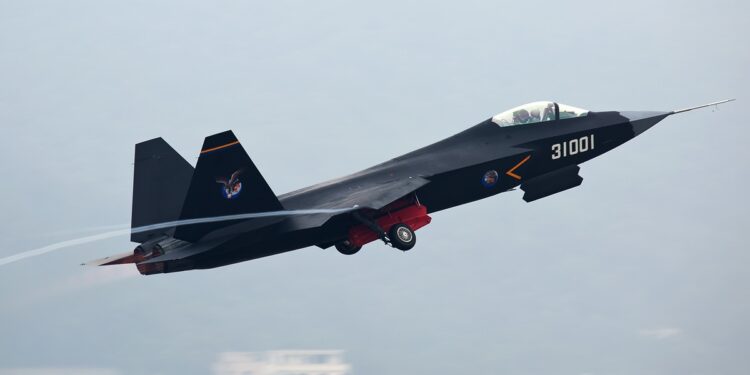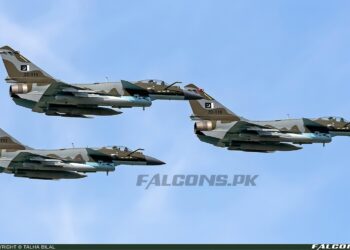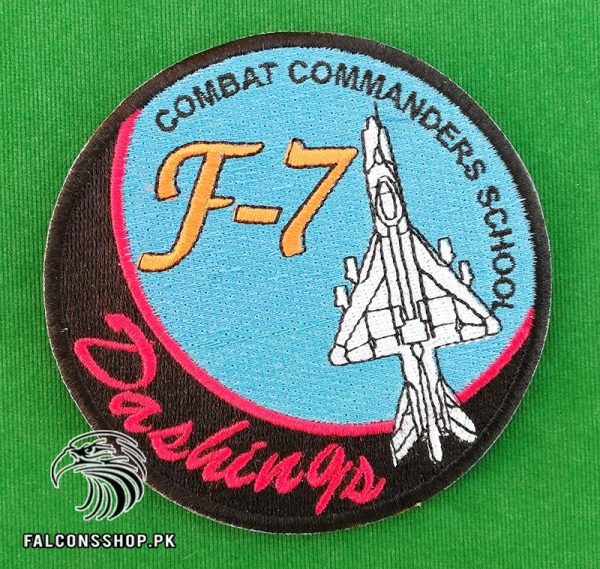By Air Marshal (Retd) Asim Suleiman
Pakistan is all set to acquire the Shenyang J-31 stealth fighter, a mid-sized twin-engine fifth-generation aircraft. Air Chief Marshal Zaheer Ahmed Babar Sidhu, during his speech at the induction ceremony of J-10C, confirmed the groundwork for incorporating the J-31 into the Pakistan Air Force (PAF) fleet and emphasised its potential as a regional game changer.
This milestone marks a significant leap in PAF defence capabilities and underscores the nation’s commitment to staying ahead in the ever-evolving strategic landscape, particularly in the context of its regional rival, India. PAF maintains a healthy fleet of approximately 350 plus diverse fighters, comprising Pakistani JF-17s, Chinese J-10Cs, F-16s, Mirages, and F-7 PGs. In comparison, the Indian Air Force (IAF) fields a fleet of approximately 600 fighters, which includes Su-30MKIs, Mirage 2000s, Jaguars, Rafales, Mig-29s, and a handful of MIG-21s. The numbers are clearly in IAF’s favour, thus forcing PAF to adopt a strategy to counter its arch adversary by technology and training rather than numbers.
The addition of the J-31, developed by China’s Shenyang Aircraft Corporation, will boost the PAF’s capabilities to cope up with the gap of numerical superiority with the IAF. Positioned as a game-changer, the J-31 shares a mission profile with the J-20 and the US F-22A Raptor and is designed as a stealth-enabled air superiority jet. Its cutting-edge technologies, encompassing advanced electronics, avionics, radars, and internal weapons bays, contribute to its potency.
The credit goes to the Air Chief to have accomplished two important aircraft acquisition milestones for the PAF in less than three years. Firstly, PAF regained its first-shot capability with the induction of J-10C following IAF’s enlistment of Rafale and secondly is now in line to acquire stealth capability in the shape of J-31. This strategic step raises questions about India’s response, particularly given its ageing fleet and ongoing fighter aircraft programmes.
India is grappling with a complex challenge in maintaining air superiority, as witnessed by recent acquisitions like Rafale jets and the ongoing development issues of the Advanced Medium Combat Aircraft (AMCA). The emergence of stealth aircraft, such as the J-31, poses a potential disadvantage that is bound to raise concerns for the IAF. The current state of India’s fighter aircraft development is at the LCA Mk1A stage, with the LCA Mk2, considered 4.5 generation, expected to make its maiden flight by 2025 and be inducted around 2029. However, the approval from the Cabinet Committee on Security (CCS) is pending, and even with swift approval, the AMCA Mk1 may not fly until 2028-29 and Mk2 by 2031, with induction possibly around 2035. In contrast, Pakistan aims for a 2024-26 timeline, as its first aircraft has already been inducted into the production cycle.
Considering these timelines, various response options for India are expected. Some propose acquiring around two squadrons of the matured F-35 as an interim measure, given its operational success and widespread usage among India’s major partners in the Indo-Pacific. However, acquiring F-35 is not possible on short notice, and such an acquisition will at least take four to six years from now. This move could impede AMCA development and could be an opportunity to garner support for the AMCA programme.
Another school of thought proposes exploring Russian options, either the Su-57 ‘Felon’ or Su-75 ‘Checkmate.’ Over 30 birds of the Su-57, a larger aircraft with a 35-ton max takeoff weight, have been produced, with 22 of them being operational and having combat experience in Ukraine and Syria. On the other hand, the Su-75, a smaller 25-ton aircraft, is still under development and planned for induction after 2026. However, concerns arise regarding India’s increasing reliance on Russian-origin aircraft, with past difficulties in maintaining Russian fleet and disagreement on the fifth-generation fighter aircraft (FGFA) work-sharing experience leading to India pull out.






